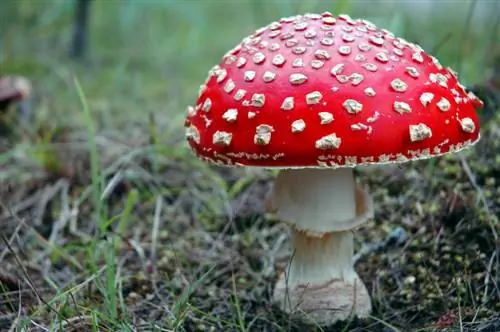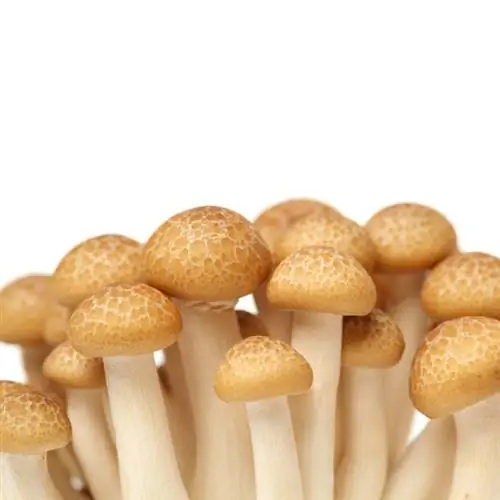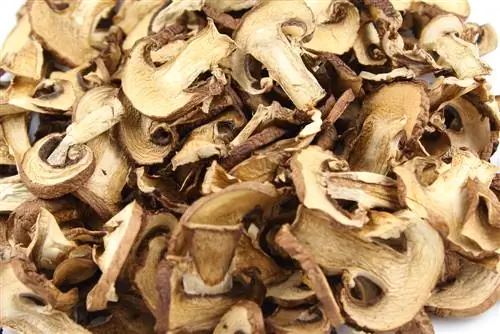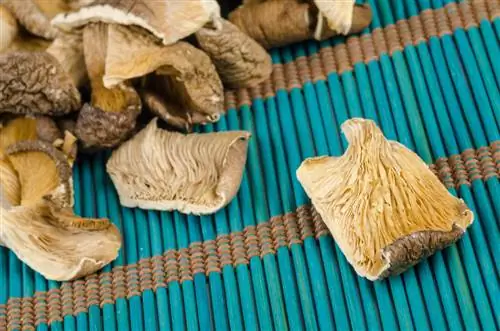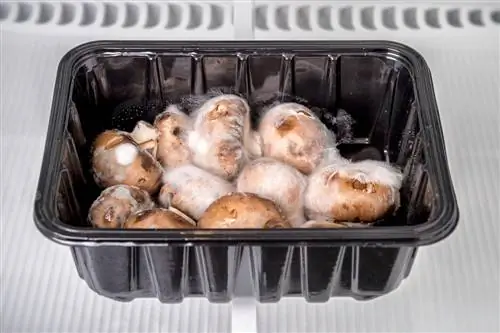- Author admin [email protected].
- Public 2023-12-16 16:46.
- Last modified 2025-01-23 11:19.
Mushrooms in the garden and in the forest are often not easily identified as edible mushrooms or poisonous mushrooms, even by experts. The tricky thing here lies in the fact that many poisonous mushrooms look similar to edible specimens.
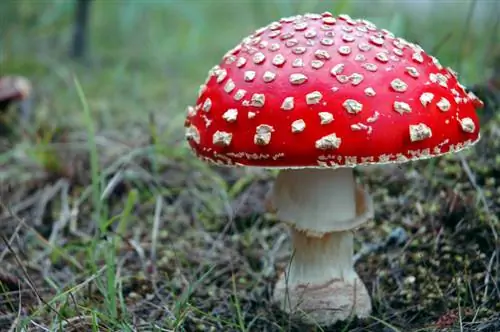
How do you recognize poisonous mushrooms and how should you deal with them?
Poisonous mushrooms such as fly agaric, green death cap or satan bolete are difficult to distinguish from edible mushrooms. As a beginner, you should seek help from experts and leave poisonous mushrooms in the forest as they play an important role in the ecosystem.
Edible mushrooms are often non-toxic only when cooked or fried
Many edible mushrooms contain hemolysins and other substances that are toxic to humans when raw and are decomposed when heated. When cooked, they are a treat for the palate, but raw, they are difficult to tolerate or even fatal. In addition, the tolerance of mushrooms sometimes also depends on a person's physical characteristics. Even excessive consumption of raw or cooked mushrooms can be difficult for one mushroom connoisseur, while others have no problems with it. This indigestibility is due to the fact that mushrooms are predominantly not made of cellulose, but of chitin.
The most famous and dangerous mushrooms
Among the thousands of mushroom species worldwide, there are a large proportion of poisonous specimens. That's why only absolute mushroom connoisseurs should eat collected mushrooms. If you are unsure, be sure to seek help from an expert to identify what you have found. The most famous poisonous mushrooms in this country are the following types of mushrooms:
- Green death cap mushroom
- White death cap mushroom
- Poison Thief
- Pointy Rough Head
- Orange-faced Roughhead
- Fly Agaric
- Panther mushroom
- Satansbolt
- Peitäubling
The dangerous resemblance
Poisonous mushrooms such as the fly agaric are often known to children and, like poisonous bushes in forests and fields, are not a major danger. On the other hand, poisonous mushroom varieties, which look deceptively similar to tasty edible mushrooms, pose a far greater danger. The common gall bolete, for example, is one of the dangerous counterparts of the porcini mushrooms. The green death cap is said to be responsible for up to ninety percent of all fatal mushroom poisonings in Central Europe because it has a special similarity to common mushrooms.
Protect and preserve poisonous mushrooms
Even if poisonous mushrooms generally pose a danger to inexperienced mushroom pickers, they still fulfill a function in a he althy ecosystem. Specimens that are poisonous to humans, such as the fly agaric, are inedible for mushroom pickers, but they are an important food for various forest dwellers and insects during the respective season. Therefore, you should also consciously leave poisonous discoveries when collecting mushrooms and do not trample them.
Tips & Tricks
As a beginner mushroom picker, you should not rely solely on an identification book. In order to dispel any remaining doubts about the edibility of mushrooms, we recommend going on forest walks with regional mushroom experts to train your own eyes accordingly.

